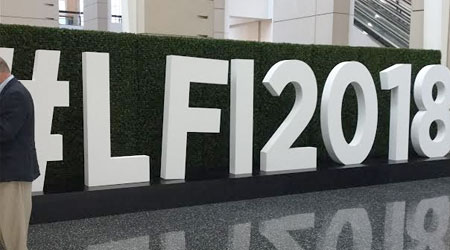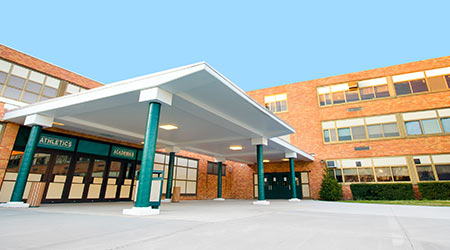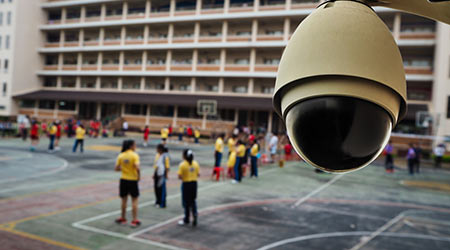
Beyond Light: Trends Observed at #LFI2018
May 23, 2018
The fact that lighting produces visible light was almost beside the point at the recent gathering of the lighting industry, Lightfair International. The center of most any new product conversations was the capabilities of LED lighting as a digital appliance in the ceiling that can support a range of facilities goals beyond making sure workers can see their keyboards.
Lighting IoT
LED luminaires can easily integrate with onboard sensors. These sensors have become smaller, more powerful and more varied in their application. Just a few years ago, onboard sensors might be used to control the luminaire's operation, such as occupancy sensing or vacancy sensing to turn the fixture on or off, or daylight sensing to dim the luminaire. This is, of course, still a use case, but this year, the conversations around sensing focused on using occupancy sensing to build heat maps of space use so facility managers can build a business case for consolidating or reconfiguring workspace for the way occupants actually use it. Another use case that was more robust this year was asset tracking using Bluetooth beacon technology in the luminaires. Sensor-enabled LED luminaires can be leveraged to facilitate myriad IoT-enabled applications, and the industry is just getting started stretching into the possibilities.
Flexibility
Another trend in the lighting industry is a desire to meet many different needs with one fixture. White tunable lighting was almost de rigueur for new product offerings. Facility managers can select from either a sliding range or a fixed set of color temperatures, as well as lumen intensity. Some lighting options provide the selection through an app, while others offer toggles on the back of the luminaire housing. Reducing the number of SKUs facilities have to keep in house is one motivation for this push on field-customization.
Quality
Luminaires continue to produce more lumens for fewer watts, but the quality of the light appears to be a greater part of the conversation, in particular as it ties into human-centric design. Standing under some of the offerings, it would have been impossible to tell I was not under a skylight on a sunny day. The light felt wonderfully round and golden in some areas of the show floor, though plenty of cheaper, harsh options abound.
Disinfection
One focus area that was new this year was white light disinfection technology. Germicidal lighting has been around for a while, but it is not intended for occupied space. This UV lighting is used to clean fan coils or disinfect unoccupied rooms. New technologies are being explored in the lighting industry that bring disinfection via lighting into the occupied space. One manufacturer is testing a luminaire that emits UVA for a limited amount of time, while continuously emitting white visible light. A couple other manufacturers are working with light in the violet spectrum, which is mixed with other sources to provide white light and continuous disinfection.
Form Factor
On the aesthetics front, designers continue to play with the thinness of LEDs, embedding lit channels into walls or suspending thin linear bars from cables. Edge-lit technology was also everywhere, from utilitarian panels for grid ceilings to architectural round panels meant to function as art as much as light.
This Quick Read was submitted by Naomi Millán, senior editor, Building Operating Management.
Next
Read next on FacilitiesNet












